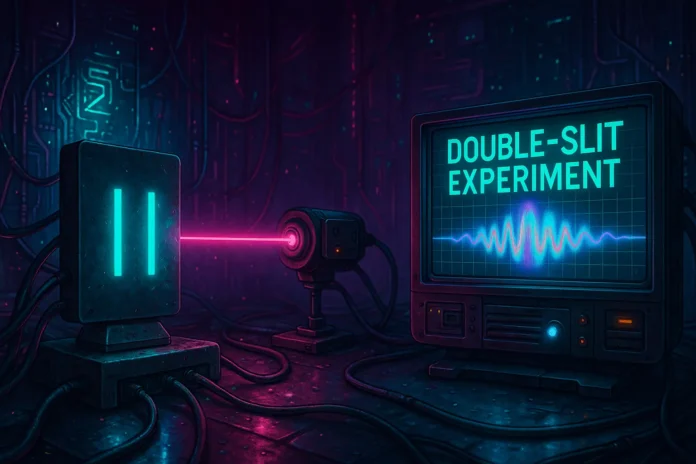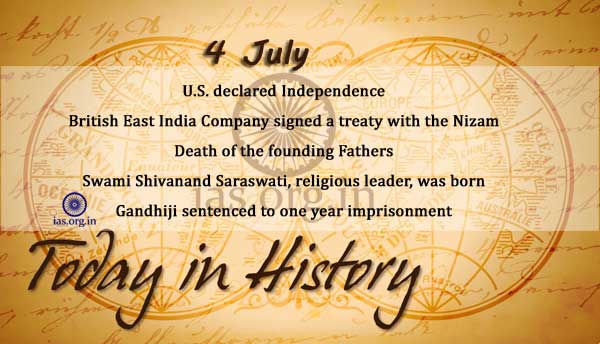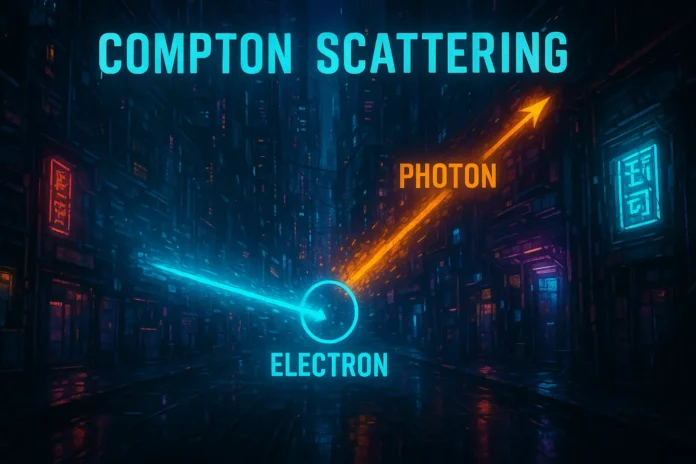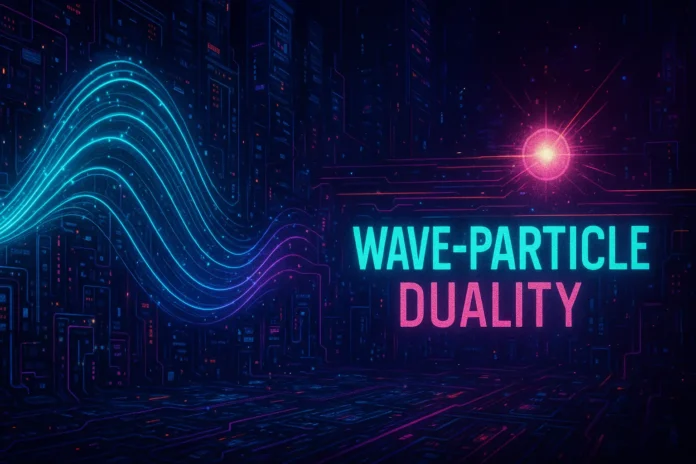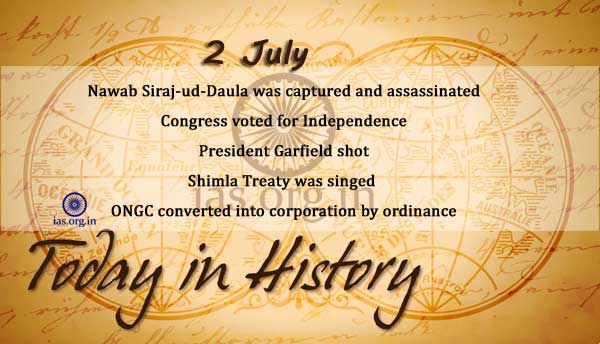Table of Contents
- Introduction
- Historical Background
- Classical Wave Behavior
- Young’s Original Experiment
- Single-Photon and Single-Electron Double-Slit Experiments
- Interference Patterns and Quantum Superposition
- Quantum Mechanical Description
- Probability Amplitudes and the Born Rule
- Which-Path Information and Wavefunction Collapse
- Complementarity and Bohr’s Interpretation
- Delayed-Choice Experiment
- Quantum Eraser Variants
- The Double-Slit as a Test of Reality
- Experimental Realizations with Matter
- Implications for Quantum Technology
- Conclusion
1. Introduction
The double-slit experiment is perhaps the most iconic and revealing demonstration of quantum mechanics. It shows that even individual particles, such as photons or electrons, can create interference patterns — a hallmark of wave behavior — yet also arrive as discrete impacts. This paradox encapsulates the mystery of wave-particle duality and the role of observation in quantum mechanics.
2. Historical Background
- Thomas Young (1801): first demonstrated interference of light using two slits, supporting the wave theory of light
- With the advent of quantum mechanics, the experiment took on deeper significance
- Repeated with electrons, neutrons, atoms, and even large molecules like buckyballs
3. Classical Wave Behavior
When classical waves (e.g., water, sound, or light) pass through two slits:
- They interfere constructively and destructively
- Create a pattern of alternating bright and dark bands (fringes) on a screen
This is wave interference, and it’s well described by Huygens’ principle and the wave equation.
4. Young’s Original Experiment
Young’s setup:
- A monochromatic light source
- A barrier with two narrow slits
- A screen to observe resulting light patterns
Interference pattern is governed by:
\[
d \sin \theta = m \lambda, \quad m \in \mathbb{Z}
\]
Where:
- \( d \) is slit separation
- \( \theta \) is angle of the fringe
- \( \lambda \) is the wavelength
5. Single-Photon and Single-Electron Double-Slit Experiments
Quantum versions of the experiment send one particle at a time through the slits.
Observations:
- No pattern appears initially
- As many particles accumulate, an interference pattern emerges
- Each particle acts as if it interferes with itself
This behavior is inexplicable by classical mechanics.
6. Interference Patterns and Quantum Superposition
Quantum theory suggests that a particle can exist in a superposition of going through both slits simultaneously:
\[
|\psi\rangle = \frac{1}{\sqrt{2}} (|\text{slit 1}\rangle + |\text{slit 2}\rangle)
\]
The resulting pattern is a consequence of interference between these probability amplitudes.
7. Quantum Mechanical Description
Wavefunction for two slits:
\[
\psi(x) = \psi_1(x) + \psi_2(x)
\]
Probability distribution on the screen:
\[
P(x) = |\psi(x)|^2 = |\psi_1(x) + \psi_2(x)|^2
\]
This includes a cross-term that causes interference:
\[
P(x) = |\psi_1(x)|^2 + |\psi_2(x)|^2 + 2 \text{Re}[\psi_1^*(x) \psi_2(x)]
\]
8. Probability Amplitudes and the Born Rule
Born’s rule connects wavefunctions to physical outcomes:
\[
P(x) = |\psi(x)|^2
\]
This gives the probability of detecting a particle at location \( x \). The interference pattern is a probability distribution built over many trials.
9. Which-Path Information and Wavefunction Collapse
If a detector is placed to determine which slit the particle passes through:
- The interference pattern disappears
- Particle behaves classically
This shows that observation affects outcome and is interpreted as wavefunction collapse.
10. Complementarity and Bohr’s Interpretation
Bohr’s complementarity principle states:
- Particles exhibit wave-like or particle-like behavior depending on measurement setup
- Not both at the same time
- Measurement influences the physical reality
11. Delayed-Choice Experiment
John Wheeler’s delayed-choice version:
- Decision to observe which-path information is made after the particle passes the slits
- Outcome still conforms to the later measurement
- Suggests that future measurement influences past behavior
Challenges classical notions of causality.
12. Quantum Eraser Variants
These experiments “erase” which-path information after detection:
- Restores interference pattern retroactively
- Emphasizes that it’s not just the act of measurement, but the availability of information that determines behavior
13. The Double-Slit as a Test of Reality
The experiment challenges:
- Realism: particles have definite properties before measurement
- Locality: no faster-than-light influence
- Determinism: outcomes are probabilistic
It remains a powerful testbed for foundational questions in quantum theory.
14. Experimental Realizations with Matter
Double-slit interference has been demonstrated with:
- Electrons
- Neutrons
- Atoms
- Molecules (C60 fullerenes)
Shows that wave-particle duality scales with complexity and mass.
15. Implications for Quantum Technology
- Quantum cryptography relies on interference and measurement collapse
- Quantum computing uses superposition and entanglement
- Matter-wave interferometry in gravitational wave detection and inertial navigation
The double-slit experiment is a pedagogical and experimental cornerstone.
16. Conclusion
The double-slit experiment is more than a clever setup — it is a window into the soul of quantum mechanics. It demonstrates that reality at small scales is governed by probability, superposition, and the act of measurement. Whether we shoot photons or molecules, the message remains clear: the quantum world defies classical expectation and continues to challenge our deepest intuitions about nature.


